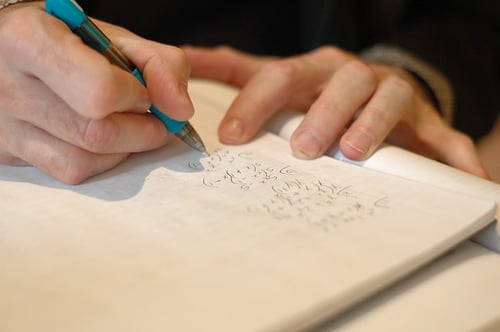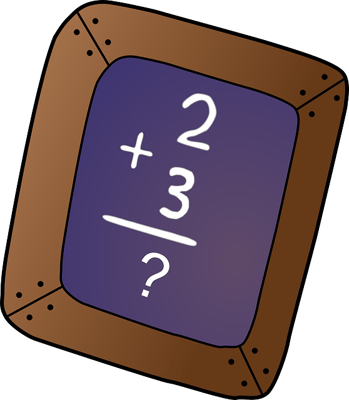What happens to the order of operations when youre solving a two-step equation?
Anybody who'due south taken a math grade in the United states of america has heard the acronym "PEMDAS" before. But what does it mean exactly? Hither, nosotros will explicate in detail the PEMDAS pregnant and how it'due south used before giving you some sample PEMDAS problems so yous can practice what you've learned. PEMDAS is an acronym meant to assist you remember the social club of operations used to solve math problems. It'southward typically pronounced "pem-dass," "pem-dozz," or "pem-doss." Hither'due south what each letter in PEMDAS stands for: The society of letters shows you the guild you lot must solve different parts of a math problem, with expressions in parentheses coming start and addition and subtraction coming final. Many students use this mnemonic device to assist them remember each letter of the alphabet: Please Eastxcuse One thousandy Dear Aunt Sally. In the U.k. and other countries, students typically larn PEMDAS as BODMAS. The BODMAS meaning is the same as the PEMDAS meaning—it just uses a couple different words. In this acronym, the B stands for "brackets" (what nosotros in the US call parentheses) and the O stands for "orders" (or exponents). Now, how exactly do you lot use the PEMDAS rule? Allow's take a await. PEMDAS is an acronym used to remind people of the order of operations. This means that you don't just solve math issues from left to correct; rather, you lot solve them in a predetermined order that's given to you via the acronym PEMDAS. In other words, you'll showtime by simplifying any expressions in parentheses before simplifying whatsoever exponents and moving on to multiplication, etc. Simply there's more to information technology than this. Here's exactly what PEMDAS ways for solving math issues: If whatsoever of these elements are missing (e.g., you have a math problem without exponents), yous can merely skip that step and move on to the next one. Now, let's await at a sample problem to help you understand the PEMDAS rule improve: 4 (5 − 3)² − x ÷ 5 + 8 Yous might be tempted to solve this math problem left to right, but that would result in the wrong answer! So, instead, let's apply PEMDAS to help the states arroyo it the right way. We know that parentheses must be dealt with beginning. This problem has 1 prepare of parentheses: (5 − 3). Simplifying this gives u.s. 2, so now our equation looks like this: 4 (2)² − 10 ÷ v + 8 The next role of PEMDAS is exponents (and square roots). In that location is 1 exponent in this trouble that squares the number 2 (i.e., what we found by simplifying the expression in the parentheses). This gives u.s. ii × 2 = iv. And then at present our equation looks like this: 4 (4) − 10 ÷ five + 8 OR four × 4 − x ÷ v + 8 Side by side up is multiplication and sectionalization from left to right. Our problem contains both multiplication and division, which we'll solve from left to right (so first 4 × 4 and then 10 ÷ 5). This simplifies our equation as follows: 16 − 2 + eight Finally, all nosotros need to do now is solve the remaining addition and subtraction from left to right: 16 − two + eight The terminal answer is 22. Don't believe me? Insert the whole equation into your calculator (written exactly equally it is above) and y'all'll become the aforementioned consequence! See whether you tin solve the following 4 problems correctly using the PEMDAS rule. We'll go over the answers afterwards. Here, we go over each problem above and how you tin employ PEMDAS to get the correct answer. xi − eight + 5 × 6 This math problem is a fairly straightforward example of PEMDAS that uses improver, subtraction, and multiplication only, and then no having to worry nigh parentheses or exponents here. We know that multiplication comes before addition and subtraction, so you'll need to start by multiplying five by 6 to get 30: eleven − eight + 30 Now, we tin simply work left to right on the addition and subtraction: eleven − 8 + 30 This brings us to the correct answer, which is 33. 8 ÷ two (2 + 2) If this math problem looks familiar to y'all, that'south probably because it went viral in August 2019 due to its ambiguous setup. Many people argued over whether the correct reply was 1 or 16, but as we all know, with math there's (about always!) only one truly correct reply. So which is information technology: 1 or xvi? Permit's encounter how PEMDAS tin give us the right respond. This problem has parentheses, division, and multiplication. So we'll beginning by simplifying the expression in the parentheses, per PEMDAS: 8 ÷ ii (iv) While nigh people online agreed upwardly until this point, many disagreed on what to practice next: do you multiply 2 by 4, or divide viii by 2? PEMDAS tin respond this question: when it comes to multiplication and division, you always piece of work left to right. This means that you lot would indeed divide 8 by 2 before multiplying past 4. Information technology might help to look at the problem this way instead, since people tend to go tripped upwards on the parentheses (remember that anything next to a parenthesis is being multiplied by any is in the parentheses): viii ÷ two × 4 Now, we just solve the equation from left to right: viii ÷ two × 4 The correct answer is xvi. Anyone who argues it's one is definitely wrong—and clearly isn't using PEMDAS correctly! vii × iv − ten (5 − 3) ÷ two² Things beginning to become a bit trickier now. This math trouble has parentheses, an exponent, multiplication, partition, and subtraction. But don't get overwhelmed—let'southward piece of work through the equation, one stride at a time. Offset, per the PEMDAS rule, we must simplify what'southward in the parentheses: vii × 4 − 10 (2) ÷ 2² Easy peasy, correct? Side by side, let's simplify the exponent: 7 × 4 − 10 (ii) ÷ iv All that'due south left at present is multiplication, sectionalisation, and subtraction. Remember that with multiplication and segmentation, nosotros simply work from left to right: 7 × 4 − x (2) ÷ 4 One time you lot've multiplied and divided, you but need to practise the subtraction to solve it: 28 − five This gives us the correct reply of 23. √25 (iv + two)² − 18 ÷ 3 (3 − one) + 2³ This trouble might expect scary, but I promise it's not! Equally you lot long as you arroyo it one step at a time using the PEMDAS rule, you'll be able to solve information technology in no time. Right away we can run into that this problem contains all components of PEMDAS: parentheses (2 sets), exponents (two and a square root), multiplication, partitioning, addition, and subtraction. But it's really no different from any other math problem we've washed. Beginning, we must simplify what's in the two sets of parentheses: √25 (6)² − eighteen ÷ 3 (two) + 2³ Side by side, we must simplify all the exponents— this includes square roots, too: 5 (36) − 18 ÷ 3 (2) + viii Now, we must exercise the multiplication and partitioning from left to right: v (36) − 18 ÷ 3 (2) + eight Finally, nosotros solve the remaining addition and subtraction from left to correct: 180 − 12 + eight This leads usa to the right answer of 176 . Another math acronym you should know is SOHCAHTOA. Our expert guide tells you what the acronym SOHCAHTOAH ways and how you can utilize information technology to solve bug involving triangles. Studying for the SAT or ACT Math section? So you'll definitely want to cheque out our ultimate Saturday Math guide/ACT Math guide, which gives you tons of tips and strategies for this tricky department. Interested in really large numbers? Learn what a googol and googolplex are, every bit well equally why information technology'due south incommunicable to write one of these numbers out.
PEMDAS Meaning: What Does It Correspond?
How Do You Apply PEMDAS?
14 + 8
= 22  David Goehring/Flickr
David Goehring/Flickr Sample Math Bug Using PEMDAS + Answers
Sample PEMDAS Problems
Answers
Answer Explanations
#one Answer Caption
three + 30
= 33 #2 Reply Explanation
4 × iv
= 16  If only these sample PEMDAS problems were as easy equally this ...
If only these sample PEMDAS problems were as easy equally this ... #iii Answer Explanation
28 − 10 (2) ÷ 4
28 − xx ÷ 4
28 − v
= 23 #iv Answer Explanation
180 − 18 ÷ 3 (2) + eight
180 − 6 (ii) + 8
180 − 12 + 8
168 + 8
= 176 What'due south Next?

Almost the Author
Hannah received her MA in Japanese Studies from the University of Michigan and holds a available's degree from the Academy of Southern California. From 2013 to 2015, she taught English in Japan via the JET Program. She is passionate about education, writing, and travel.
Source: https://blog.prepscholar.com/pemdas-meaning-rule
0 Response to "What happens to the order of operations when youre solving a two-step equation?"
Post a Comment